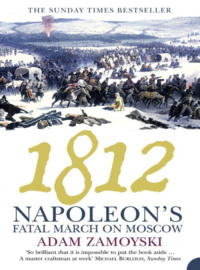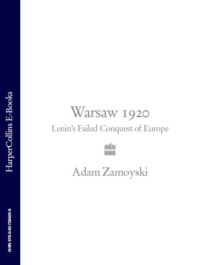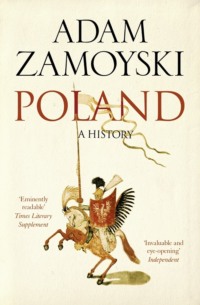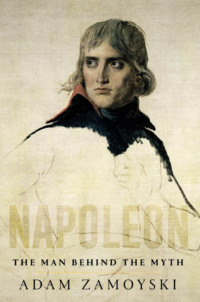
Полная версия
Poland: A history
This placed the order in a position to organise annual forays (reysas) against the pagans for kings, princes and knights who wished to acquit themselves of the duty to bear arms for Christ. These reysas were like safaris for the visiting grandees, who not only fulfilled their crusading vows but enjoyed a good campaign. They also took away a favourable impression of the order, which they subsequently expressed by giving it grants of land in their own countries and by supporting it diplomatically. At the same time, the increase in crusading activity in the region created tensions and problems of its own, as it was now drawing in not only Denmark, Sweden, Norway and the Polish duchies, but also the emerging state of Lithuania and the Russian principalities of Novgorod and Muscovy.
By 1283 most of Prussia had been conquered. Although it was settled by a considerable number of landless Polish and German knights, it was the Teutonic Order that ruled the province. It established a formidable stronghold at Marienburg, a number of castles throughout the territory and a port at Elbing (Elbląg) to carry trade from the province. It proved an efficient administrator, as monastic discipline precluded venality and its structure provided a degree of continuity which dynastic states (with their disputed successions, minorities and likelihood of feckless or incompetent rulers) lacked. The knights’ rule was relatively benign to begin with. They favoured voluntary over forced conversion of the autochton—ous population, and were pragmatic enough to use local pagans to fight alongside them when necessary. But repeated revolts and apostasies made them take a more jaundiced view with time, and the autochtones were gradually all but exterminated.
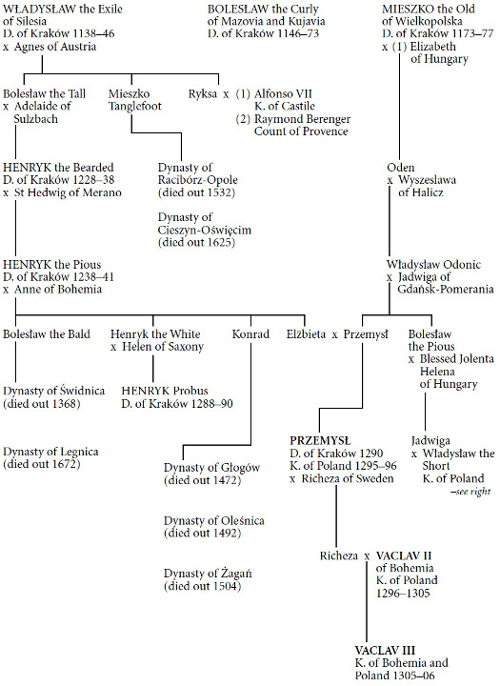
Fig. 2 The division and reunification of Poland under the later Piasts
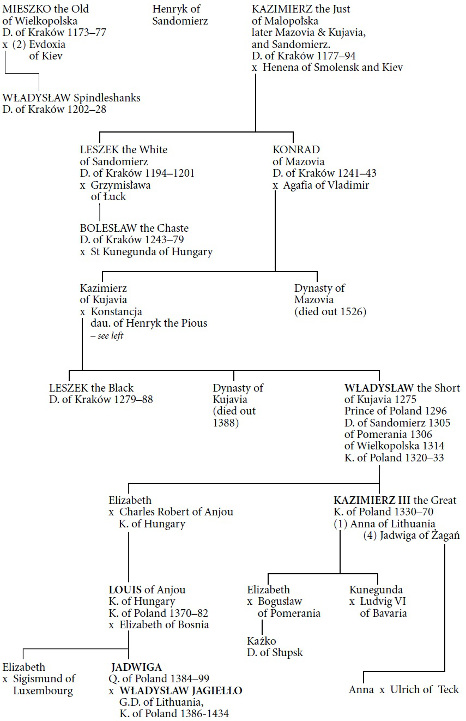
In the space of fifty years, the Prussian nuisance on the Mazovian border had been replaced by a well-ordered state. This did not in itself represent a threat to the Polish duchies. But it was one of a series of developments that would.
A century earlier, in 1150, the last Slav prince of Brenna died, to be succeeded by a German. The March of Brandenburg, as it then became, encroached eastwards, driving a wedge between Slav states on the Baltic, where the outflanked Prince Bogusław of Szczecin was forced to accept German overlordship, and those to the south, like the small principality of Lubusz, which was annexed to Brandenburg outright. In 1266 Brandenburg took Santok, and in 1271 Gdańsk, thus extending its own territory to that of the Teutonic Order. The Poles retook both Gdańsk and Santok in the following year, but they would never push the German advance back to the river Oder. From the stronghold they had set up at Berlin on the river Spree in 1231, the margraves of Brandenburg looked eastward, and they would seize every opportunity to extend their dominion in that direction.
At the same time, settlers from all over Germany came in search of land and opportunity, usually well received by Polish rulers, and by the end of the thirteenth century not only Silesian and Pomeranian cities such as Wrocław and Szczecin, but even the capital, Kraków, had become predominantly German. In Silesia and Pomerania, the influx of landless knights and farmers from Germany also made itself felt in rural areas, radically affecting the will as well as the ability of local Piast rulers to stand by a disunited Poland. Like so many small shopkeepers, these minor rulers had to pay tribute to whoever was strong enough to impose protection. One by one the princes of Pomerania, outflanked by German states and undermined by the German ascendancy in their cities, particularly Hanseatic centres such as Szczecin and Stargard, had to accept the German Emperor instead of the Duke of Kraków as their overlord. This process weakened the greater Polish duchies as well, as a result of which even their independence came under threat. In 1300 King Vaclav II of Bohemia was able to invade Wielkopolska, and with the blessing of the Emperor have himself crowned King of Poland.
If the experience of the Tatar invasions had provided a powerful argument in favour of reuniting the Polish duchies into a single kingdom, this was given added weight by increasing resentment of the encroaching Germans and foreigners in general. After Bohemia’s capture of Kraków with the connivance of some of the townspeople in 1311, the Polish troops which retook it the following year rounded up all the citizens and beheaded those who could not pronounce the Polish tongue-twisters they were made to repeat.
It was also supported by the Church. Until now, this had not played a political role, merely an administrative one. Under the early Piast kings, the bishops had been little more than functionaries with no power-base of their own. The devolution of the country into separate duchies changed this, as the individual dukes needed the support of their local bishops. These were quick to perceive that if the Polish duchies were absorbed into Bohemia or Germany, the Polish Church would lose its autonomous status, and they took steps to counter the creeping Germanisation. At the Synod of Łęczyca in 1285 the Polish bishops adopted a resolution that only Poles could be appointed as teachers in church schools.
After the canonisation of Stanisław, the Bishop of Kraków put to death by Bolesław II and recognised as patron of Poland in 1253, the monk Wincenty of Kielce wrote a life of the saint in which the alleged miraculous growing together of his quartered body is described as prophetic of the way in which the divided Poland would become one again. Similarly patriotic sentiments can be detected in the chronicle of another Bishop of Kraków, Wincenty Kadłubek, written in the first years of the thirteenth century, and in the more reliable Kronika Wielkopolska, written by a churchman in Poznań in the 1280s.
The message was taken up by some of the dukes, who decided to abandon the hereditary principle and to elect from their number an overlord who would rule effectively in Kraków. Henryk Probus of Silesia was the first to be chosen in this way, and on his death in 1290 the Kraków throne was given to Przemysł II of Gniezno, who was actually crowned King of Poland in 1295, but was assassinated two years later by agents of Brandenburg. He was succeeded in 1296 by a prince of the Mazovian line, Władysław the Short, who was to become one of the most remarkable of Polish kings.
The Bohemian invasion of 1300 forced Władysław to flee the country for a time, and he went to Rome in search of allies. As his sobriquet suggests, he was a small man, but he knew what he wanted and how to get it, laying his plans with skill. The Papacy was locked in one of its perennial conflicts with the Empire, and therefore looked kindly on the anti-Imperial Polish prince. Władysław sought the support of Charles Robert of Anjou, the erstwhile King of Naples and Sicily who had just succeeded to the Hungarian throne. With the Pope’s support he sealed an alliance by marrying his daughter to the Angevin. Having also secured the cooperation of the princes of Halicz and Vladimir he set off to reconquer his realm from the Czechs.
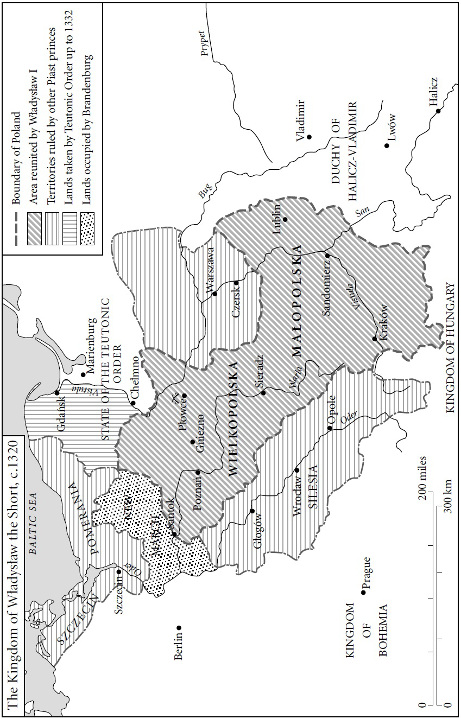
In 1306 he took Kraków and in 1314 Gniezno, thus gaining control of the two principal provinces, while a third, Mazovia, recognised his overlordship. In 1320 he was crowned King of Poland, the first to be crowned at Kraków. By making an alliance with Sweden, Denmark and the Pomeranian principalities, Władysław forced Brandenburg on to the defensive while he dealt with the Teutonic Order, which was in a difficult position. The fall of Acre to the Saracens in 1291 had deprived it of its headquarters. The indictment in 1307 of the Templars, on whom the Teutonic Knights were closely modelled, their subsequent dissolution and savage persecution, were a chilling warning to any order which grew too powerful. Władysław lost little time in taking the Teutonic Order to a Papal court not only on charges of invasion and rapine, but on more fundamental questions of whether it was fulfilling its mission. The Papal judgement went against the order, but the very fact that the Knights had been cornered brought about a subtle change in their attitude.
Their headquarters, located in Venice after the fall of Acre so as to be ready for future crusades in the Holy Land, was quickly moved to Marienburg in Prussia in 1309. Prussia now became not a crusading outpost, but a state, and it would settle its disputes with neighbours not through Papal courts but on the battlefield. In concert with its ally John of Luxembourg, King of Bohemia, the order invaded Poland. The Silesian Duke Bolko of Świdnica held off the Bohemians while Władysław marched against the order and defeated it in a costly battle at Płowce in 1331. Too weak to pursue his advantage, he did not manage to reassert a Polish ascendancy in Pomerania or Silesia, where the German hegemony persisted. Nevertheless, by the time of his death in 1333, Władysław the Short had managed to reunite the central provinces and to establish at least nominal control over a number of other areas. His son Kazimierz III (1333-70), known as the Great, was able to carry through this process and to place the sovereignty of Poland beyond question.
In this he was assisted by an unusually favourable conjunction of circumstances. As a minor ice-age reduced yields and ruined harvests throughout much of Europe, Poland basked in a more than usually warm and temperate spell, which produced not only bumper crops but also conditions in which Mediterranean fruit could be grown and wine produced. While the Hundred Years’ War devastated the richest lands in western Europe and wrought financial havoc as far afield as Italy, Poland was spared lengthy conflicts. Finally, as the entire Continent was engulfed by the plague of 1348, the Black Death, most of Poland remained unaffected. The populations of England and France, of Italy and Scandinavia, of Hungary, Switzerland, Germany and Spain were more than halved. Poland’s grew, partly as a consequence of conditions elsewhere. The depredations of the plague were accompanied by widespread famine, which provoked an exodus from towns, and refugees roamed Europe in search of food and a safe haven. In addition, the need for a scapegoat had provoked the greatest wave of anti-Jewish atrocities in medieval history, and terrified survivors also fled, mainly eastwards. All were welcomed in Poland, which insisted only on a period of quarantine.
Kazimierz was a fitting ruler for these halcyon days. Physically handsome, with a broad forehead and a remarkable head of hair, he was a regal figure, combining courage and determination with the tastes of a voluptuary. He launched a building programme which, along with the cathedrals of Kraków and Gniezno and churches all over the country, gave rise to sixty-five new fortified towns, the fortification of twenty-seven existing ones, and fiftythree new castles. He also rerouted the Vistula at Kraków, and constructed a canal linking the salt-mines of Wieliczka with the capital. In 1347 he codified the entire corpus of existing laws in two books: one, the Statute of Piotrków, for Wielkopolska; one, the Statute of Wiślica, for Małopolska. He reformed the fiscal system, created a central chancellery, and regulated the monetary situation with the introduction in 1388 of new coinage. In the towns, he established guilds and extended Magdeburg Law. He granted a separate law to the Armenians living in Polish cities and gave the Jews their own fiscal, legal, and even political institutions.
These measures laid the foundations of a new boom. Polish cities gained considerable numbers of merchants and skilled artisans, while the influx of Jews provided them with banking and other facilities. This stimulated industry. Newly-discovered deposits of iron, lead, copper, silver, zinc, sulphur and rock salt were exploited and mining techniques improved. The traditional exports of grain, cattle, hides, lumber and other forest produce were supplemented by manufactured goods such as finished cloth, which was carried as far west as Switzerland.
Contact with the outside world was increasing, largely thanks to the Church, whose activity, both missionary and educational, brought foreign clerics to Poland and sent Polish ones abroad, some, like the friar Benedictus Polonus, as far as the capital of the Mongol Khan Guyuk in 1245, but most to study, particularly at the universities of Bologna and Paris. King Kazimierz exerted a personal influence on the development of learning and culture, and laid the foundations of the flowering of the next century by establishing, in 1364, a university at Kraków. Coming just after the foundation of the Charles University of Prague and before those of Vienna and Heidelberg, this was the second such academy in central Europe. Unlike most English, French and German universities, which evolved from religious institutions, it was based on the Italian models of Padua and Bologna, which were secular establishments.
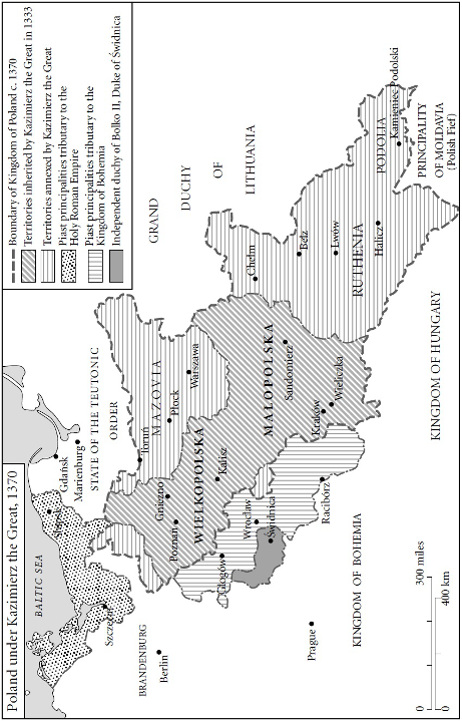
While he lavished care on domestic projects and encouraged education and the arts, Kazimierz did not neglect foreign affairs: he inherited a kingdom of 106,000 square kilometres, and left one of 260,000.He warred with John of Luxembourg, King of Bohemia, over rival claims to Silesia, finally defeating him in 1345, one year before the unfortunate blind king lost his ostrich feathers to the Prince of Wales at Crécy. He then turned his attention to the east.
The Tatar invasions of the previous century had annihilated the Principality of Kiev, and the smaller Russian principalities were only allowed to survive at the cost of yearly tribute to the Tatars, who had settled in southern Russia. Two such principalities, those of Halicz and Vladimir, were adjacent to Poland’s south-eastern border. Both were dynastically connected with Poland, and after the princes of Halicz died out, in 1340, Kazimierz incorporated their lands into his own dominion.
This elongation of Poland to the south-east was inevitable and permanent. The move of the Polish capital from Gniezno to Kraków three hundred years before was now beginning to affect Polish policy significantly. The king viewed his dominions from a different vantage point, and the most pervasive influence at court was that of the magnates of Małopolska, the ‘Kraków Lords’.
There was more at stake in this eastern theatre than territorial gain. The disintegration of Kiev had left a power vacuum into which Poland was inevitably drawn, all the more so since another power was taking more than a passing interest in the area—Lithuania.
The Lithuanians were a Baltic people like the Prussians and the Latvians, between whom they were settled. Long after their kindred Latvians and Prussians had been subjugated by the Sword Brothers and the Teutonic Knights respectively, the Lithuanians continued to defy all attempts at conquest. They were ruled by a dynasty well suited to the situation, prepared to make peace and accept token Christianity from the order to gain support against the Russians of Novgorod, and from Novgorod to defeat the order. Their conduct of policy was so wily and volatile that none of their neighbours could ever rest easy. After the débâcle of Kiev, the Lithuanians annexed vast tracts of masterless land. In 1362 their ruler Grand Duke Algirdas defeated the Tatars at the Battle of the Blue Waters, and in the following year he occupied Kiev itself.
In less than a hundred years the Lithuanian state had quadrupled in size, but while this made it more formidable to its enemies, it endeared it to none and enmeshed it in problems which, for once, were too great for its rulers. They could not hope to administer the huge area populated with Christian Slavs by whose multitude they were to be eventually swamped. Their seizure of these lands had brought them into conflict with the Tatars on one front, while the Teutonic Knights were straining all their resources to crush them on the other. The Russian principalities were hostile, while the Poles, who now shared a long frontier with Lithuania, were growing tired of sporadic border raids. Lithuania needed an ally. The problem of which to choose was the most pressing issue facing Grand Duke Iogaila when he came to the Lithuanian throne in 1377. And that same year had placed Poland in a dilemma, for different reasons.
Kazimierz the Great had died in 1370. Although married four times, he had no heir, and left the throne to his nephew, Louis of Anjou, King of Hungary. King Louis attended his uncle’s funeral and then went back to Hungary, leaving his mother, the late king’s sister, to rule in his name. She could not rule without the support of the more powerful nobles of Małopolska, the ‘Kraków Lords’. They exploited this opportunity to assume a greater share not only in the running of the country, but in the definition of its very status.
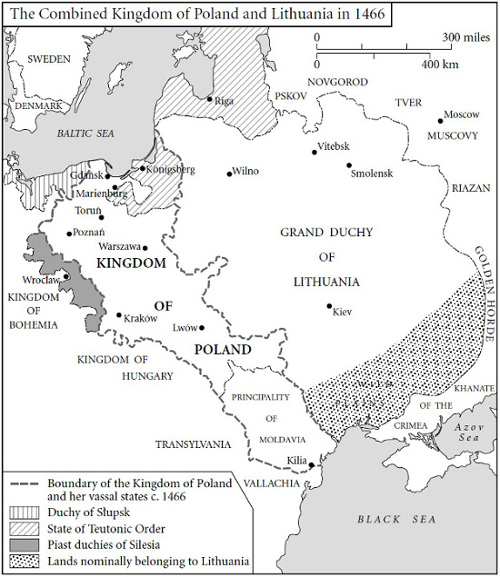
A new concept of the Polish state had been evolving from the beginning of the fourteenth century whose gist was that sovereignty should be vested not in the person of the monarch, but in a specific geographical area, the Corona Regni Poloniae, an expression meant to embrace all the Polish lands, even those which had fallen under foreign domination. In 1374 the Polish nobles wrested from King Louis the Statute of Košice, which stressed the indi visibility of this patrimony, and stipulated that no part of it was his to give away. They were looking to a future which remained uncertain, since Louis, too, had no male heir.
He did, however, have two daughters. He had married the elder, Maria, to Sigismund of Luxembourg, and intended him to take the Polish throne. The younger, Hedwig, was betrothed to Wilhelm of Habsburg, who was to have Hungary. But when Louis died in 1382, the Kraków Lords refused to bow to these wishes and made their own plans.
They rejected the already married Maria and brought her ten-year-old sister Hedwig, Jadwiga in Polish, to Kraków, where in 1384 she was crowned emphatically king (rex). The chronicler Długosz noted: ‘The Polish lords and prelates were so taken with her, so greatly and sincerely loved her that, almost forgetting their masculine dignity, they did not feel any shame or degradation in being the subjects of such a gracious and virtuous lady.’ In fact, they saw her principally as an instrument, and they disregarded her feelings entirely. When young Wilhelm of Habsburg turned up to claim his betrothed, she was locked in the castle on Wawel hill. After fruitless efforts to see her he left, and she was prepared by the Polish lords for the bed of another: they had found a husband for her in Iogaila, Grand Duke of Lithuania.
The idea of a union between Poland and Lithuania had germin—ated simultaneously in both countries. On 14 August 1385 a basic agreement was signed at Krewo. This was followed by more specific pledges at Wołkowysk in January 1386, and at Lublin a few weeks later. On 12 February, Jagiełło, as his name had crystallised in Polish, entered Kraków, and three days later he was baptised as Władysław. On 18 February he married Jadwiga, and on 4 March was crowned King of Poland.
Конец ознакомительного фрагмента.
Текст предоставлен ООО «ЛитРес».
Прочитайте эту книгу целиком, купив полную легальную версию на ЛитРес.
Безопасно оплатить книгу можно банковской картой Visa, MasterCard, Maestro, со счета мобильного телефона, с платежного терминала, в салоне МТС или Связной, через PayPal, WebMoney, Яндекс.Деньги, QIWI Кошелек, бонусными картами или другим удобным Вам способом.





